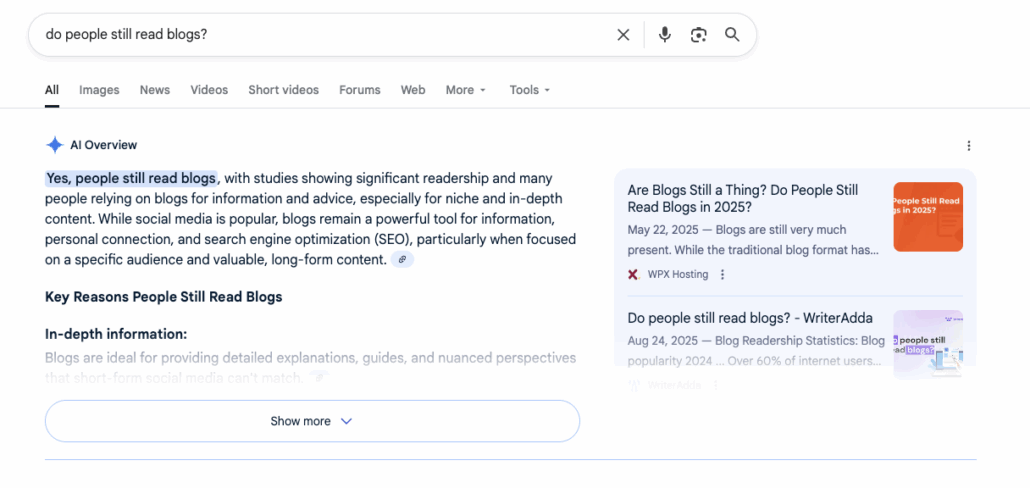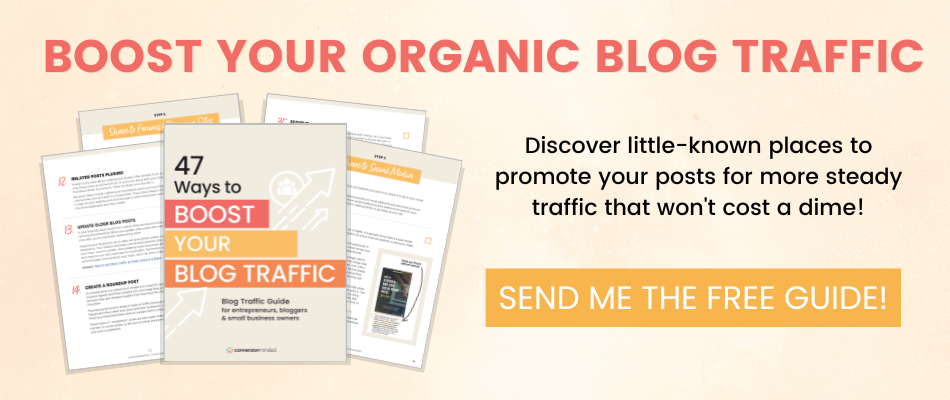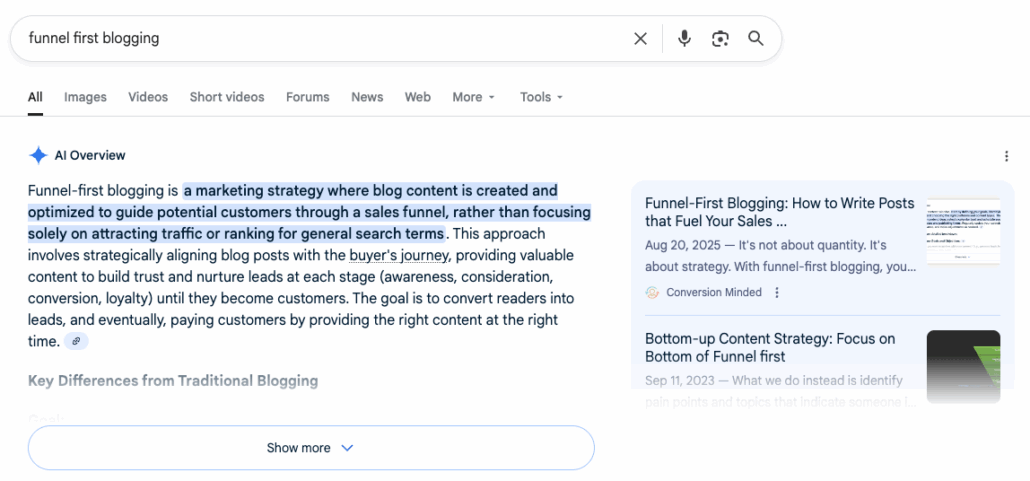I wrote my first blog post in 2004. And over the last 20+ years, I’ve watched blogging survive a LOT of supposed “death sentences”…
When Facebook took over the world?
😩 “Blogging is dead, everyone’s moving to social media.”
When Google rolled out major algorithm updates that tanked everyone’s traffic?
😩 “SEO is impossible now, blogging is over.”
When video became the thing?
😩 “Nobody reads anymore, it’s all Tiktok/YouTube/Reels now.”
And now, with AI content flooding the internet and Google changing how it ranks and displays results? You guessed it:
👉 “Is blogging dead? (Again?)”
It’s true that the internet feels very different now. But through every upset, every algorithm change, every new platform that was supposed to “kill blogging” there’s been one constant: people read blog posts.
So I thought it would be fun to share my thoughts on what I see happening with blogging in the age of AI — and hang in there with me, because I think there’s actually a silver lining.
We’ll go over what’s changed, what hasn’t, and why this might actually be the best time to double down on strategic blogging.
Ready? Let’s dive in.
What‘s Changed
✦ AI has flooded the internet with content noise
So… you’ve probably noticed that AI-generated content is everywhere. We can all recognize it from a mile away by now and anyone with a ChatGPT account can pump out 10 blog posts before breakfast and they are. The internet is flooded with mediocre, soulless content that sounds like everyone else’s mediocre, soulless content.
Information alone is not enough anymore now that ChatGPT can answer any question in seconds.
How bloggers must adapt
The way you alone approach a problem — your personal experiences, case studies, and unique stories and perspectives are more important than ever.
Imagine people landing on your content and finding – to their delight – that a trustworthy human has written it. And then remember that people buy things from people they know, like, and trust… not robots.
✦ AI Has Eliminated the Blank Page Problem
Now don’t get me wrong, I think you absolutely can and should use Ai to help you speed up your writing tasks. The era of starting with a blank page is over and that’s a good thing. 🎉
But to stand out from all the noise out there, you can’t just create more noise.
How bloggers must adapt
Instead, think of Ai as an assistant that helps you figure out what your audience needs and to tell your human story more efficiently.
My favorite way to use AI when writing a blog post is to use my Ai content sidekick that’s trained on my brand voice, offers, and customer avatars and ask it to role play with me.
I ask it things like:
“What questions do you have about this topic?” so I can make sure I am answering them in my post.
Or, “What are your limiting beliefs as they relate to this topic?” so I can empathize with what they’re going through and address it.
You can also use tools like our Blog Post Vault, which includes post templates that guide your writing process and work as a companion when using AI. Rather than generic AI output, you’ll start with rough drafts that are rich with stories, depth, and include the details you need to generate leads and pull your audience deeper into your funnel.

When I use this combo, I spend the bulk of my editing and refining rather than writing from scratch or wrestling with Ai to make it sound like me. Instead, I am focused on the value – my expertise, experiences, and personal perspective.
There’s nothing wrong with using Ai or templates to speed up your blogging workflow as long as you’re using them as tools to help you show up as a unique human in the world.
✦ Search Results Are Dominated By Ai-Generated Answers Now
When you type a question into Google, it’s no longer just a list of organic and sponsored links to choose from. In many cases, you’ll get your question answered right up at the top with an AI overview and featured snippet, then be shown “People Also Ask” boxes that answer related questions in an “infinite scroll” way.

This means you can get the information you’re looking for right on Google without you ever needing to click through to an actual website. Just like social media platforms, Google is trying to keep people on their platform so they’re becoming part search engine and part answer engine.
Even if you rank well, you probably won’t get the traffic that was once possible. But here’s the thing: if you’re using your blog to attract and nurture relationships with clients and customers, it was never really about traffic volume anyway.
For you, the volume of traffic matters less than attracting qualified traffic.
What would you rather have – 10,000 visitors a month who pop in, get their questions answered, and click away forever? Or 1,000 people who are actually interested in what you do?
How bloggers must adapt
They may not arrive there through the front door (Google) as often, but they’re still coming through side doors: Ai source links, social platforms, Pinterest, and email.
As it has always been, if you focus on building your email list and social media audience you can direct your audience to your blog and get very high-quality traffic that way.
YouTube, TikTok, and Instagram are already major search engines, so instead of waiting around for Google to send you traffic, you could be creating content around it that helps people find it through these channels.
Your blog then becomes the “learn more” destination for all your content. Here are some action steps you can take…
- Use link stickers in your Instagram Stories to drive people to relevant blog posts. If you’re using a social media scheduler, you can then schedule that same story to go out every month or two.
- Set up ManyChat automations that send blog links via DM when people comment specific keywords.
- Share blog links in your social media bios
- Post Pinterest pins that are SEO-optimized and link to your best content.
- Grab our FREE boost blog traffic guide for more ideas 👇

Silver lining: we get to write about what actually matters to our audience
If we’re not constantly chasing high-volume keyword traffic, we get to do something way more interesting: create content that naturally guides people to our offers. We don’t have to write the same post that 47 other people have already written just because it gets a lot of searches.
Honestly? I find this to be absolutely liberating.
✦ Your Blog Makes You Discoverable by AI (Unique Words > Keywords)
I discovered by chance that “branding” your unique ideas, approaches or processes can help Ai discover your content.
Let me explain with an example…
I wrote a post called “Funnel-First Blogging” and noticed I was getting referral traffic from ChatGPT and Google for that content. Huh, interesting, right? 🤔
After a bit of investigating, I figured out that “Funnel-First Blogging” was a unique, branded keyword — something only I had written about in that exact way.
Google AI (Gemini) picked up on that and now this post lives at what’s called “position zero” on the search engine results page with a featured snippet and a link back to our blog post.

It turns out, branded keywords often win featured snippets because they’re low competition and highly specific — and that uniqueness makes them stand out to both search engines and AI tools.
How bloggers must adapt
Think about your frameworks, your processes, your approach to solving a common problem. Try giving it a unique name. Make it yours. See what happens!
I asked ChatGPT to give a few more examples to get your creative juices flowing so here you go:
Donald Miller → StoryBrand “StoryBrand” isn’t just a company name; it’s a branded framework for brand messaging. Now, when anyone Googles “StoryBrand”, they’re led to his book, courses, and workshops.
James Clear → Atomic Habits The phrase “atomic habits” didn’t exist before his book. It now dominates search results and gets referenced by AI and humans alike.
Mel Robbins → The 5 Second Rule A simple concept, uniquely named. That phrase owns search results and acts as a bridge to all her work.
💡 Try this AI prompt:
“Help me brainstorm unique, branded names for my [framework / process / method / approach] that helps people [describe what it does or the result it creates].
Here are a few examples of other branded frameworks people use: Funnel-First Blogging, StoryBrand, The 5-Second Rule, Atomic Habits.
Give me 10 creative name ideas that sound memorable, original, and aligned with my brand voice.”
What‘s Remained the Same
Here’s how I think about it now (and actually always have): your blog is your “home base content.”
Not Instagram. Not Facebook. Not TikTok. Those platforms can disappear, change their algorithms, or shut down your account tomorrow. Your website? That’s yours.
And here’s why this still matters:
✦ Your blog allows you to control the user experience
Social media is great for connection and visibility, but your blog lets you go deeper. It’s where you can guide people through your world — linking to freebies, offers, and service pages. You can link to related content they might enjoy to get people to linger on your site for longer and explore what you have to offer in a way you simply can’t on someone else’s platform.
✦ Your blog keeps your warm audience engaged (and buying)
When we send an email to our list with a link to a blog post, we almost always get sales. People click through, read the post, click on product mentions, visit other posts, check out our shop page… they’re engaging with our content but also our business.
Your blog gives your subscribers (warm audience) a reason to come back to your website, and that’s where purchases happen.
✦ Your blog visitors can fuel your paid advertising
If you’re running Facebook ads, “website visitors” is one of the ways to build a retargeting audience – which is typically the lowest cost and highest converting audience. You can use relevant blog post URLs just as easily as sales or landing pages for this.
✦ Your blog helps you develop (and validate) your offers
If you’re selling services, digital products, or courses, your blog is where you can test and refine your ideas before you ever build the actual product or service package.
Write a blog post related to the topic you’re thinking of teaching. Are people reading it? Engaging with it? Asking questions about it? That’s validation that there’s interest.
Plus, blogging forces you to organize your thoughts and figure out how to explain concepts clearly. By the time you’re ready to create your course or product, you’ve already done half the work — you know what resonates, how to structure the information, and what your audience actually needs.
✦ Your blog is still where people go when they’re considering buying from you
Think about it: when you’re thinking about hiring someone or buying a product, what do you do? You poke around their website. You read their content. You want to see if they know what they’re talking about. You want proof that they can actually help you.
If your competitors are posting Ai-generated robot speak and you’re showing up as a human, which one would you buy from?
✦ Blogging is still one of the best ways to build your email list
Our blog is still the #1 way we’re building our list organically and ultimately, the money is in your list. Every single post includes an invitation for new people to go deeper with us and become a part of our community.
And we also use it to nurture the audience we already have by sharing our insights with our existing subscribers and customers.
So… Is Blogging Still Worth It?
The bottom line is that people who need you haven’t stopped looking for help. They’re just looking in different places and in different ways. And when they find you — whether through Google, ChatGPT, Instagram, or a link in your email — your blog is where they decide if you’re the right person to solve their problem.
This isn’t about chasing massive traffic anymore. It’s about being there when the right people are ready to find you.
The landscape has changed so the way we approach blogging needs to change with it. But blogging itself? Not going anywhere.
Less noise. More impact. Better results. You got this. 💪
Resources mentioned in this post:
📌 The Blog Post Vault – 52 proven templates that structure your posts to attract readers, build your list, and generate sales
📌 BrandHQ Ai Content Sidekick – Train AI on your brand to help you create brand-aligned content faster whether writing from scratch or handing off to your team

